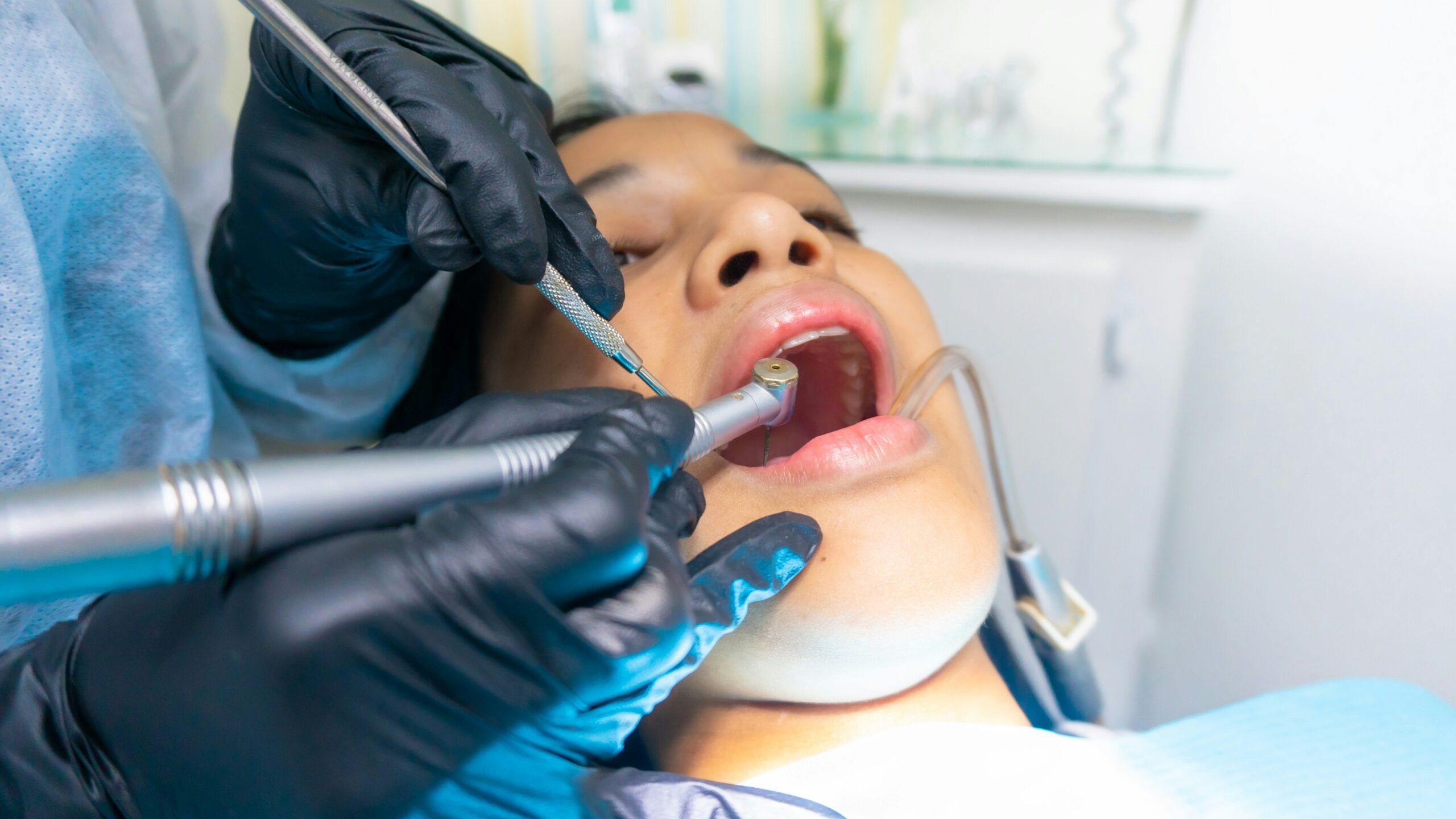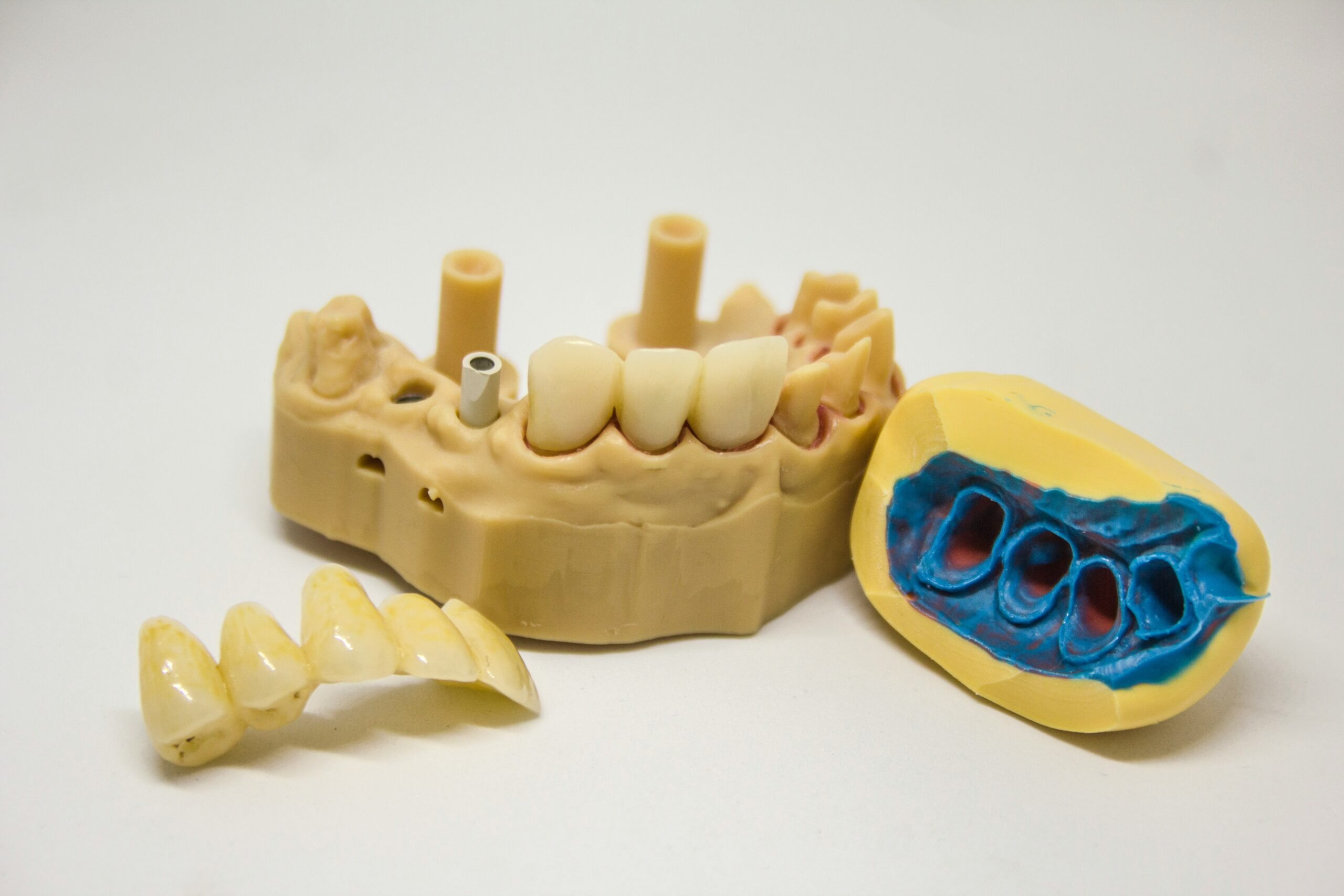A dentist with a master's in pharmaceuticals treats issues related to oral well-being. They analyze, treat, and avoid infections and afflictions of the mouth, particularly those that influence the gums and teeth. They provide more than essentially dental care, though.
Dental specialists teach their patients great verbal hygiene habits to anticipate dental issues. They frequently recognize early warning signs of more genuine health issues with verbal side effects, such as certain cancers or vitamin insufficiencies.
Dental specialists are yours, to begin with, the line of defense for oral well-being. They secure the well-being of your gums, teeth, and other oral tissues. Aside from repairing cavities and extricating teeth, dental specialists obtain noteworthy preparation in various operations. They perform anything from customary checkups to modern methods. They prioritize smile aesthetics in expansion to well-being. Moreover, they offer corrective dental administrations such as lacquers, orthodontics, and tooth brightening.

The therapeutic strength of dentistry centers on disarrangements of the mouth, maxillofacial locale, and adjoining structures. It addresses avoidance, conclusion, and treatment. This broad scope of hone incorporates helpful methods, cosmetic enhancements, orthodontics, periodontics, endodontics, prosthodontics, oral surgery, and pediatric care. It involves more than just having solid, clean teeth. Each forte makes strides in verbal care by centering on a certain component of dental well-being.
Common well-being and verbal well-being are related. Extreme results incorporate heart illness, diabetes, respiratory issues, and, indeed, pregnancy problems that can emerge from untreated tooth sicknesses. Dentistry centers on both ailment avoidance and treatment. Frequent cleanings and examinations can help defer the onset of more genuine issues. Put, having great teeth advances a solid way of life.
Dentistry has advanced massively in reaction to logical and innovative progress. Modern dental professionals utilize cutting-edge procedures to provide less intrusive and more compelling care than in the past. Thanks to headways within the industry, patients have more choices for maintaining great dental well-being. These alternatives incorporate laser medicines, advanced X-rays, and less intrusive operations.
Everybody ought to plan and schedule dental visits. Dental examinations are essential for everyone's well-being, regardless of age. Children and newborns ought to see a dental practitioner by the time their to begin with tooth appears or when they reach one year of age. Early screenings empower the discovery of potential issues such as cavities or formative disarrangements, setting the basis for a lifetime of great dental well-being.
Indeed, if they brush and floss as often as possible, people ought to visit their dental specialist at least twice a year for examinations and cleanings. Standard dental practitioner visits are basic for maintaining a strategic distance from cavities, gum illness, and other long-term dental issues.
Seniors and other more seasoned adults must continue getting these examinations. Unused issues that come with maturing include tooth misfortune, gum sickness, and dry mouth, all of which can affect common well-being. Visit dental examinations can bolster the administration of a few sicknesses and protect verbal well-being.
Individuals with long-term restorative issues, such as diabetes or heart infection, ought to be exceptionally cautious when going by a dental practitioner. Verbal well-being can be altogether affected by certain conditions. For occasion, visit examinations are basic to oversee gum illness![]() since diabetes raises the hazard of the condition. Since hormonal changes might increase a woman's risk of gum malady, pregnant women should visit a dental practitioner.
since diabetes raises the hazard of the condition. Since hormonal changes might increase a woman's risk of gum malady, pregnant women should visit a dental practitioner.
The following strategies are commonly utilized by dental specialists during the diagnosis stage:
Dental X-rays are a valuable strategy for recognizing issues that are not self-evident amid a standard examination. X-rays can identify covered-up cavities, affected teeth, bone misfortune, abscesses, and cancer. Dental specialists utilize different X-rays, counting bitewing, periapical, and all-encompassing, to supply point-by-point sees of the teeth and encompassing tissues. X-rays permit dental specialists to see the breadth of a condition, assisting them in organizing the most excellent treatment.
Bitewing X-rays are an extraordinary instrument for assessing the sum of bone-encompassing teeth and trying to find cavities in between them. By appearing at the whole tooth, from crown to root, periapical X-rays can uncover clusters related to the bone or roots. Since all-encompassing X-rays offer a careful picture of the complete mouth, counting the jaws, sinuses, and temporomandibular joints, they are accommodating within the location of affected teeth or malignancies.
Dental CT looks now and then, alluded to as cone-beam computed tomography (CBCT) looks, create exact three-dimensional pictures of the teeth, jaw, and encompassing tissues. This symptomatic device is exceptionally accommodating when a more careful picture is required, for case, when arranging inserts, deciding the position of affected teeth, or surveying jaw cancer. CBCT checks are pivotal in complex dental issues due to their high exactness and comprehensiveness.
Dental embed arranging requires information on the thickness and shape of the bone, which can, as it were, be gotten by CBCT filters. Utilizing all the pictures created by these checks, the dental practitioner may evaluate the amount and quality of bone within the jaw, guaranteeing that inserts are appropriately situated for soundness and work. In expanding to surveying the sinuses and aviation route, CBCT can help analyze issues such as counting sleep apnea.
Intraoral cameras![]() are little gadgets that take exact photos of a patient's verbal depth. The dentist and dental specialist can look at these images on a screen to examine the teeth and gums closer. Intraoral cameras are a successful demonstration and guidelines apparatus for patients managing various verbal well-being conditions, including cavities, gum infections, and split teeth.
are little gadgets that take exact photos of a patient's verbal depth. The dentist and dental specialist can look at these images on a screen to examine the teeth and gums closer. Intraoral cameras are a successful demonstration and guidelines apparatus for patients managing various verbal well-being conditions, including cavities, gum infections, and split teeth.
These cameras make the location of small breaks or gaps that are undetectable to the human eye conceivable. Dental practitioners can expeditiously treat patients by distinguishing early pointers of rot or harm, which is much appreciated by the high-resolution pictures. Intraoral cameras are another valuable educational instrument that gives patients a clear view of their oral well-being and emphasizes the centrality of accepting proper care.
A demonstrative strategy called periodontal testing assesses gum well-being and recognizes gum infection. During this procedure, a periodontal hygienist or dental practitioner measures the profundity of the pockets—the spaces between the gums and teeth—using a modest, calibrated instrument called a periodontal test. More profound pockets may indicate gum infection, but smaller pockets appear to be solid gums.
Periodontal examination is a basic component of a full dental examination. It helps identify the early stages of gum malady, such as gingivitis or periodontitis. The foremost mellow shape is gingivitis, which may, by and large, be cured with great verbal care and customary cleanings. Periodontitis is more serious and might result in tooth misfortune if cleared out untreated. Periodontal testing permits the dental specialist to decide the seriousness of the issue and create a suitable treatment technique.

Well-being issues directed by dental practitioners incorporate the following illustrations:
Cavities, commonly known as dental caries![]() , are one of the foremost visit dental infections. They are created by the acids that verbal microbes create, which dissolve tooth finish. If cleared out untreated, cavities can lead to tooth misfortune, distress, contamination, and dental degeneration.
, are one of the foremost visit dental infections. They are created by the acids that verbal microbes create, which dissolve tooth finish. If cleared out untreated, cavities can lead to tooth misfortune, distress, contamination, and dental degeneration.
To treat cavities, dental specialists expel the spoiled portion of the tooth and fill it with amalgam or composite gum. This anticipates extra rot and reestablishes the tooth's unique structure and function. If the rot has reached the tooth's inward mash, a root canal may be required to expel the harmed tissue while protecting the tooth.
Periodontal malady, regularly known as gum malady, is an irritation of the tissues that hold teeth in place. The cause is plaque, a dingy layer of microbes that amasses on teeth. If plaque isn't killed by brushing and flossing, it'll solidify into tartar, which can, as it were, be expelled by a dentist or dental hygienist.
The primary organ of gum infection, gingivitis, is distinguished by ruddy, swollen, and bleeding gums. If treatment isn't gotten, it may continue to periodontitis, which damages the bone and tissues that back teeth, and in the long run, it may come about in tooth misfortune. Concentrated decides the treatment arrangement. At first, intensive cleaning and not-too-bad good housekeeping may be adequate.
Extractions may be required when a tooth is spoiled or harmed. They may be fundamental to form space for orthodontic treatment or affected teeth, such as wisdom teeth. After desensitizing the encompassing range, the dental specialist extricates the tooth with specialized gear.
The dental practitioner seems to suture the extraction location to advance healing. In a few circumstances, they may consider supplanting the lost tooth with a bridge or a dental embed. Most people recover after tooth extractions in a few days with a nearby anesthetic.
The delicate tissue that houses the tooth's nerves and blood supply routes, known as the mash, can be harmed or tainted and is treated with root canal treatment. If the mash is contaminated due to degeneration, splits, or dreary medicines, it can be greatly awkward and, if ignored, result in abscesses.
After disengaging the ailing or harmed mash from the tooth, the dental specialist cleans and sanitizes the insides of the tooth and fills it with an extraordinary fabric to stop the contamination from spreading. The tooth is reestablished to practical and stylishly satisfying conditions with a filling or crown. More often than not, root canals are the ultimate resort for protecting a tooth, and they are carried out under local anesthetic to decrease distress.
Dental inserts![]() are a normal strategy for reestablishing misplaced teeth. A little titanium post known as an implant is surgically embedded within the mandible to supplant a lost tooth's root. After the implant's combination with the bone, a crown is set on the best date to reestablish the tooth's appearance and usefulness.
are a normal strategy for reestablishing misplaced teeth. A little titanium post known as an implant is surgically embedded within the mandible to supplant a lost tooth's root. After the implant's combination with the bone, a crown is set on the best date to reestablish the tooth's appearance and usefulness.
Dental inserts are a long-term arrangement with various benefits compared to dentures or bridges. They provide a strong, durable foundation for the new tooth, permitting typical support and communication. Furthermore, they diminish the chance of bone misfortune caused by lost teeth and ensure the jawbone.

If you plan your dental specialist appointment for development, you'll make the most of your time there. Earlier in the session, brushing and flossing might help eliminate food particles and plaque. This allows the dentist to see the teeth and gums more clearly, which makes cleaning strategies more comprehensive and viable.
Having a list of questions or stresses to share with the dental specialist is additionally useful. These requests can concern verbal cleanliness hones, dental conditions, or potential therapies. Being prepared ensures that all of the patient's stresses are handled and they get the required data.
It may be supportive for those on edge to see the dental specialist to discuss their concerns. Several dental workplaces give anxiety-reduction strategies, such as sedation dentistry or relaxation treatment, to make the visit more comfortable.